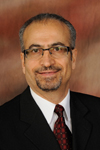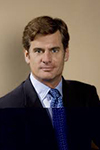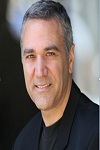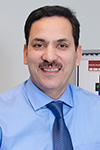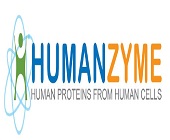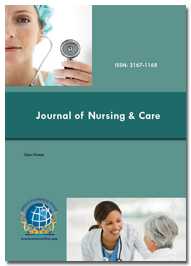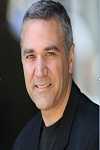Theme: Novel Therapies in Cell Science and Stem Cell Research
Stem Cell Research-2016

On behalf of the organizing committee, it is my distinct pleasure to invite you to attend the Stem Cell Research-2016. After the success of the Cell Science-2011, 2012, 2013, 2014, 2015, OMICS International is proud to announce the 6th World Congress on Cell & Stem Cell Research (Stem Cell Research-2016) which is going to be held during February 29-March 02, 2016, Philadelphia, USA. The theme of Stem Cell Research-2016 is “Novel Therapies in Cell Science and Stem Cell Research”.
This annual Cell Science conference brings together domain experts, researchers, clinicians, industry representatives, postdoctoral fellows, and students from around the world, providing them with the opportunity to report, share, and discuss scientific questions, achievements, and challenges in the field.
Examples of the diverse cell science and stem cell topics that will be covered in this comprehensive conference include Cell differentiation and development, Cell metabolism, Tissue engineering and regenerative medicine, Stem cell therapy, Cell and gene therapy, Novel stem cell technologies, Stem cell and cancer biology, Stem cell treatment, Tendency in cell biology of aging and Apoptosis and cancer disease, Drugs and clinical developments. The meeting will focus on basic cell mechanism studies, clinical research advances, and recent breakthroughs in cell and stem cell research. With the support of many emerging technologies, dramatic progress has been made in these areas. In Stem Cell Research-2016, you will be able to share experiences and research results, discuss challenges encountered and solutions adopted and have opportunities to establish productive new academic and industry research collaborations.
In association with the Stem Cell Research-2016 conference, we will invite those selected to present at the meeting to publish a manuscript from their talk in the journal Cell Science with a significantly discounted publication charge. Please join us in Philadelphia for an exciting all-encompassing annual Stem Cell get together with the theme of better understanding from basic cell mechanisms to latest Stem Cell breakthroughs!

Haval Shirwan, Ph.D.
Executive Editor, Journal of Clinical & Cellular Immunology
Dr. Michael and Joan Hamilton Endowed Chair in Autoimmune Disease
Professor, Department of Microbiology and Immunology
Director, Molecular Immunomodulation Program, Institute for Cellular Therapeutics,
University of Louisville, Louisville, KY
OMICS International Conferences invites all the participants from all over the world to attend '6th World Congress on Cell & Stem Cell Research’ during February 29-March 02, 2016 in Philadelphia, USA which includes prompt keynote presentations, Oral talks, Poster presentations and Exhibitions
Track 01: Stem Cell
The most well-established and widely used stem cell treatment is the transplantation of blood stem cells to treat diseases and conditions of the blood and immune system, or to restore the blood system after treatments for specific cancers. Since the 1970s, skin stem cells have been used to grow skin grafts for patients with severe burns on very large areas of the body. Only a few clinical centers are able to carry out this treatment and it is usually reserved for patients with life-threatening burns. It is also not a perfect solution: the new skin has no hair follicles or sweat glands. Research aimed at improving the technique is ongoing.
Related Conferences:
International Conference on Pancreatic and Colorectal Cancer, March 29-30, 2016, Atlanta, USA; International Conference on Prostate Cancer and Treatment, May 5-7, 2016, Chicago, USA; Cancer Diagnostics Conference & Expo, June 13-15, 2016, Rome, Italy; International Conference on Tissue Science and Regenerative Medicine, Sept 12-14, 2016, Berlin Germany;Gene Regulatory Networks and the Encoded Causality of Development, May 16-18, 2016, California, USA; Stem Cell Models of Neural Degeneration and Disease, February 1-3, 2016 Dresden, Germany; Stem Cells and Cancer, March 6-10, 2016, Colorado, USA; Transdifferentiation and Tissue Plasticity in Cardiovascular Rejuvenation; February 7-10, 2016, West Sussex, UKTrack 01: Cell Differentiation:
Cellular differentiation is the progression, whereas a cell changes from one cell type to another. Variation occurs numerous times during the development of a multicellular organism as it changes from a simple zygote to a complex system of tissues and cell types. Differentiation continues in adulthood as adult stem cells divide and create fully differentiated daughter cells during tissue repair and during normal cell turnover. Some differentiation occurs in response to antigen exposure. Differentiation dramatically changes a cell's size, shape, membrane potential, metabolic activity, and responsiveness to signals. These changes are largely due to highly controlled modifications in gene expression and are the study of epigenetics. With a few exceptions, cellular differentiation almost never involves a change in the DNA sequence itself. Thus, different cells can have very different physical characteristics despite having the same genome.
Related Conferences:
5th International Conference and Exhibition on Cell & Gene Therapy, May 19-21, 2016, San Antonio, USAInternational Conference on Melanoma and Carcinoma, July 14-15, 2016, Brisbane, Australia, Annual Conference Stem Cell and Regenerative on Medicine, Aug 4-6, 2016, Frankfurt, Germany; 9th International Conference on Molecular & Cellular Cardiology, Aug 22-24, 2016, Sao Paulo, Brazil; 4th International Conference on Blood Malignancies and Treatment, April 18-20, 2016, Dubai, UAE; 2nd International Congress on Neuroimmunology & Therapeutics, March 31-Apr 2, 2016, Atlanta, USA; Molecular and Cellular Basis of Growth and Regeneration, January 10-14, 2016 , Colorado, USA; Phacilitate Cell & Gene Therapy World, January 25-27, Washington D.C., USA; ISSCR Stem Cell Models of Neural Degeneration and Disease, 1-3 February 2016, Dresden, Germany; Craniofacial Morphogenesis & Tissue Regeneration, March 13-18, 2016, California, USA; Keystone Stem Cells and Cancer, March 6-10, 2016 Colorado, USA
Track 02: Cell Metabolism:
Metabolism is the set of life-nourishing chemical transformations within the cells of living organisms. These enzyme-catalyzed reactions allow organisms to grow and reproduce, maintain their structures, and respond to their environments. Metabolism is divided into two categories: catabolism, the breaking down of organic matter by way of cellular respiration, and anabolism, the building up of components of cells such as proteins and nucleic acids.
Related Conferences:
International Conference on Tissue Science and Regenerative Medicine, Sept 12-14, 2016, Berlin Germany; International Conference on Pancreatic and Colorectal Cancer, March 29-30, 2016, Atlanta, USA; International Conference on Prostate Cancer and Treatment, May 5-7, 2016, Chicago, USA; Cancer Diagnostics Conference & Expo, June 13-15, 2016, Rome, Italy; International Conference Bimolecular Engineering, January 5-7, 2016, Singapore; Molecular and Cellular Basis of Growth and Regeneration, January 10-14, 2016, Colorado, USA; Metabolism, Transcription and Disease, January 10-14, 2016, Iquitos, Peru; Gordon Research Conference & Seminar "Origins of Life", January 17-22, 2016, Galveston, USA; Small RNA Silencing Little Guides, Big Biology, January 24-28, 2016, Colorado, USA
Track 03: Tissue Engineering:
Tissue Engineering is the study of the growth of new connective tissues, or organs, from cells and a collagenous scaffold to produce a fully functional organ for implantation back into the donor host. Powerful developments in the multidisciplinary field of tissue engineering have produced a novel set of tissue replacement parts and implementation approaches. Scientific advances in biomaterials, stem cells, growth and differentiation factors, and biomimetic environments have created unique opportunities to fabricate tissues in the laboratory from combinations of engineered extracellular matrices cells, and biologically active molecules.
Related Conferences:
Experts Meeting on Gynecologic Oncology, May 19-21, 2016 San Antonio, USA; Annual Plant Genomics Conference, July 14-15, 2016, Brisbane, Australia; International Conference on Integrative Biology, July 18-20, 2016, Berlin, Germany; Industrial Biotechnology Congress, July 28-29, 2016, Berlin, Germany; Asia Pacific Biotech Congress, July 25-27, 2016, Bangkok, Thailand; International Conference on Tissue Engineering and Regenerative Medicine, June 9-10, 2016, San Francisco, USA; Keystone Stem Cells and Regeneration in the Digestive Organs, March 13-17, 2016 Colorado, USA; ISSCR Pluripotency: From basic science to therapeutic applications, 22-24, March 2016 Kyoto, Japan; Keystone Cardiac Development, Regeneration and Repair, April 3-7, 2016 Utah, USA; The Stem Cell Niche–Development & Disease, 22-26, May 2016, Hillerød, Denmark
Track 04: Epigenetics:
Epigenetics is the study of genetics, cellular and physiological phenotypic trait variations that are caused by external or environmental factors that switch genes on and off and affect how cells read genes instead of being caused by changes in the DNA sequence. Epigenetic change in eukaryotic biology is the process of cellular differentiation. During morphogenesis, totipotent stem cells become the various pluripotent cell lines of the embryo, which in turn become fully differentiated cells.
Related Conferences:
International Conference on Cancer Genomics, Aug 8-9, 2016, Las Vegas, USA; International Conference on Genetics Counseling and Genomics Medicine, Aug 11-12, 2016, Birmingham, UK; Biotechnology World Convention, Aug 15-17, 2016, Sao Paulo, Brazil; International Conference on Synthetic Biology, Aug 18-19, 2016, London, UK, Annual Conference on Bio Science, Sept 12-13, 2016, Berlin, Germany; Noncoding RNAs in Health and Disease, February 21-24, 2016, Santa Fe, USA; Maintenance of Genome Stability March 7- 10, 2016, Panama, South America; Chromatin and Epigenetics, March 20-24, 2016 Whistler, Canada; Chromatin, Non-Coding RNAs and RNAP II Regulation in Development and Disease, March 29, 2016, Austin, USA; Chromatin Structure & Function, May 22-27, 2016, Les Diablerets, Switzerland
Track 05: Gene Therapy:
Gene therapy is the therapeutic delivery of nucleic acid polymers into a patient's cells as a drug to treat disease. Gene therapy could be a way to fix a genetic problem at its source. The polymers are either expressed as proteins, interfere with protein expression, or possibly correct genetic mutations. In the future, this technique may allow doctors to treat a disorder by inserting a gene into a patient's cells instead of using drugs or surgery.
Related Conferences:
5th World Congress on Hemophilia, June 6-8, 2016, London, UK; 2nd World Bio Summit & Expo, Oct 13-15, 2016, Dubai, UAE; 4th International Conference on Genomics & Pharmacogenomics, Sept 12-14, 2016, Berlin Germany; International Conference on Molecular Biology, Oct 13-15, 2016, Dubai, UAE; World Congress on Human Genetics, Oct 31 - Nov 2, 2016, Valencia, Spain; International Conference on Cell and Gene Therapy, March 3-4, 2016, Singapore; Molecular and Cellular Basis of Growth and Regeneration, January 10-14, 2016, Colorado, USA; Axons: from cell biology to pathology, January 24-27, 2016, New Mexico; Craniofacial Morphogenesis & Tissue Regeneration, March 13-18, 2016, California, USA
Track 07: Cell Biology of Aging:
Aging process is the result of the inability of various types of stem cells to continue to replenish the tissues of an organism with functional differentiated cells capable of maintaining that tissues (or organ's) original function.
Related Conferences:
International Conference on Cancer Genomics, Aug 8-9, 2016, Las Vegas, USA; International Conference on Genetics Counseling and Genomics Medicine, Aug 11-12, 2016, Birmingham, UK; Biotechnology World Convention, Aug 15-17, 2016, Sao Paulo, Brazil; International Conference on Medical Ethics and Health Policies, June 9-11, 2016, London, UK, Annual Conference on Bio Science, Sept 12-13, 2016, Berlin, Germany; International Aging and Disease Conference, October 01-02, 2016, Stanford, USA; 4th World Parkinson Congress, September 5-6, 2016 Portland, USA; Disasters in an Ageing World-Readiness, Resilience and Recovery, June 21-23, 2016, Brisbane, Australia; American Geriatrics Society Annual Scientific Meeting, May 19-21, 2016, Long Beach, USA; American Society on Aging (ASA) 2016 Aging in America Conference, March 20-24, 2016, Washington, USA
Track 08: Computational Biology:
Computational Biology, sometimes referred to as bioinformatics, is the science of using biological data to develop algorithms and relations among various biological systems. Bioinformatics groups use computational methods to explore the molecular mechanisms underpinning stem cells. To accomplish this bioinformatics develop and apply advanced analysis techniques that make it possible to dissect complex collections of data from a wide range of technologies and sources.
The fields of stem cell biology and regenerative medicine research are fundamentally about understanding dynamic cellular processes such as development, reprogramming, repair, differentiation and the loss, acquisition or maintenance of pluripotency. In order to precisely decipher these processes at a molecular level, it is critical to identify and study key regulatory genes and transcriptional circuits. Modern high-throughput molecular profiling technologies provide a powerful approach to addressing these questions as they allow the profiling of tens of thousands of gene products in a single experiment. Whereas bioinformatics is used to interpret the information produced by such technologies.
Related Conferences:
6thInternational Conference on Bioinformatics, March 29-30, 2016 Valencia, Spain; 6th International Conference and Expo on Proteomics, March 29-31, 2016, Atlanta, USA; 4th International Conference on Integrative Biology, July 18-20, 2016, Berlin, Germany; Industrial Biotechnology Congress, July 28-29, 2016, Berlin, Germany; Asia Pacific Biotech Congress, July 25-27, 2016, Bangkok, Thailand; International Conference on Computational Biology, Paris, France; February 22-23, 2016 Systems Immunology: From Molecular Networks to Human Biology, January 10-14, 2016 Montana, United States; Whole-Cell Modeling Summer School, April 3-8, 2016 Barcelona, Spain; From Functional Genomics to Systems Biology, November 12-15, 2016, Heidelberg, Germany
Track 09: Genetic Engineering:
Genetic engineering is the direct manipulation of an organism's genome using biotechnology. Whereas set of technologies used to change the genetic makeup of cells, including the transfer of genes within and across species boundaries to produce improved or novel organisms. New DNA may be inserted in the host genome by first isolating and copying the genetic material of interest using molecular cloning methods to generate a DNA sequence, or by synthesizing the DNA, and then inserting this construct into the host organism.
Embryonic stem cells have a major potential for studying early steps of development and for use in cell therapy. In many situations, however, it will be necessary to genetically engineer these cells. A novel generation of lentivectors which permit easy genetic engineering of mouse and human embryonic stem cells.
Related Conferences:
Annual Plant Genomics Conference, July 14-15, 2016, Brisbane, Australia; 4th International Conference on Integrative Biology, July 18-20, 2016, Berlin, Germany; Industrial Biotechnology Congress, July 28-29, 2016, Berlin, Germany; Asia Pacific Biotech Congress, July 25-27, 2016, Bangkok, Thailand; 5th International Conference and Exhibition on Cell and Gene Therapy, May 19-21, 2016 San Antonio, USA; International Conference Biomolecular Engineering, Singapore; Cell Culture 2016, London, UK; 4th Biotechnology World Congress, Dubai, UAE; Genome Editing and Gene Modulation Congress 2016, Oxford, UK; European Symposium on Biochemical Engineering Sciences 2016, Dublin, Ireland
Track 10: Apoptosis:
Apoptosis is the process of programmed cell death (PCD) that may occur in multicellular organisms. Biochemical events lead to characteristic cell changes (morphology) and death. These changes include blebbing, cell shrinkage, nuclear fragmentation, chromatin condensation, chromosomal DNA fragmentation, and global mRNA decay. Most cytotoxic anticancer agents induce apoptosis, raising the intriguing possibility that defects in apoptotic programs contribute to treatment failure. Because the same mutations that suppress apoptosis during tumor development also reduce treatment sensitivity, apoptosis provides a conceptual framework to link cancer genetics with cancer therapy.
Related Conferences:
14th World Congress on Cancer Therapy, Dec 8-10, 2016, Dallas, USA; 13th Global Oncologists Summit and Cancer Therapy, Oct 17-19, 2016, Dubai, UAE; 12th Euro Global Summit on Cancer Therapy, Sept 26-28, 2016, London, UK; International Conference on Cervical Cancer, Sept 22-23, 2016, Vienna, Austria; 2nd World Congress on Breast Cancer, Sept 19-21, 2016, Pheonix, USA; Cell Death, July 3-8, 2016 Girona, Spain; A Matter of Life or Death: Cell Death in Cancer, January 28 -30, 2016 Amsterdam, Netherlands; Cancer Vaccines: Targeting Cancer Genes for Immunotherapy, March 6-10, 2016 Whistler, Canada; Symposium on Signalling Pathways in Cancer 2016: Focusing on the HER/EGFR family signalling, March 04-05, 2016, Barcelona, Spain
Track 11: Somatic Cell Therapy:
Somatic cell therapy is the administration to humans of autologous, allogeneic, or xenogeneic living cells which have been manipulated or processed ex vivo. Manufacture of products for somatic cell therapy involves the ex vivo propagation, expansion, selection. Somatic cell therapy is viewed as a more conservative, safer approach because it affects only the targeted cells in the patient, and is not passed on to future generations. Somatic gene therapy represents mainstream basic and clinical research, in which therapeutic DNA (either integrated in the genome or as an external episome or plasmid) is used to treat disease. Most focus on severe genetic disorders, including immunodeficiencies, haemophilia, thalassaemia and cystic fibrosis. Such single gene disorders are good candidates for somatic cell therapy.
Related Conferences:
2nd International Conference on Antimicrobial Agents and Chemotherapy, June 6-7, 2016 Dallas, USA; 9th Global Diabetelogists Annual Meeting and Medicare Expo , June 6-8, 2016, Dallas, USA; 4th International Conference on Integrative Biology, July 18-20, 2016, Berlin, Germany; Industrial Biotechnology Congress, July 28-29, 2016, Berlin, Germany; Asia Pacific Biotech Congress, July 25-27, 2016, Bangkok, Thailand; International Conference Biomolecular Engineering, Singapore; Cell Culture 2016, London, UK; Reprogramming Cell Fate, March 04-05, 2016, Texas, USA; International Conference on Cell and Gene Therapy, July 25-26, 2016 Paris, France; Derivation and Culture of Human Induced Pluripotent Stem Cells, Hinxton, UK; Axons: from cell biology to pathology, New Mexico; Annual Meeting of the Japan Society of Gene Therapy (JSGT), October 18 -21, 2016, Japan
Track 12: Histology of Cell biology:
Histology is the scientific study of biological tissues. It is the microscopic study of the structure of biological tissues using special staining techniques combined with light and electron microscopy. Histology is the study of the microscopic structures of cells and tissues of plants and animals. Histological studies may be conducted using tissue culture, where live human or animal cells are isolated and maintained in an artificial environment for various research projects. The ability to visualize microscopic structures is frequently enhanced through the use of histological stains. Histology is an essential tool of biology and medicine.
Related Conferences:
Annual Plant Genomics Conference, July 14-15, 2016, Brisbane, Australia; 4th International Conference on Integrative Biology, July 18-20, 2016, Berlin, Germany; Industrial Biotechnology Congress, July 28-29, 2016, Berlin, Germany; Asia Pacific Biotech Congress, July 25-27, 2016, Bangkok, Thailand; 5th International Conference and Exhibition on Cell and Gene Therapy, May 19-21, 2016 San Antonio, USA; International Conference Biomolecular Engineering, Singapore; Cell Culture 2016, London, UK; United States & Canadian Academy of Pathology Annual Meeting, March 12-18, 2016, Seattle, USA; ISSCR Stem Cell Models of Neural Degeneration and Disease, February 1-3, 2016, Dresden, Germany; Craniofacial Morphogenesis & Tissue Regeneration, March 13-18, 2016, California, USA; Keystone Stem Cells and Cancer, March 6-10, 2016, Colorado, USA
Track 13: Human Embryology:
Human embryogenesis is the process of cell division and cellular differentiation of the embryo that occurs during the early stages of development. Whereas human development entails growth from a stage celled zygote to an adult human being stage. Fertilization occurs when the sperm cell successfully enters and fuses with an egg cell (ovum). The genetic material of the sperm and egg then combine to form a single cell called a zygote and the germinal stage of prenatal development commences.
Related Conferences:
Annual Conference Stem Cell and Regenerative on Medicine, Aug 4-6, 2016, Frankfurt, Germany; 9th International Conference on Molecular & Cellular Cardiology, Aug 22-24, 2016, Sao Paulo, Brazil; 2nd International Conference and Exhibition on Tissue preservation and Bio-banking, Aug 18-19, 2016, Portland, Oregon; International Conference on Human Reproduction and Embryology, May 23-24, 2016, London, UK; Conference on Embryology and Developmental Biology, June 1-3, 2016, Nanjing, China; European Society of Human Reproduction and Embryology, July 3-6, 2016, Helsinki, Finland
Track 14: Tumour Cell Science:
An abnormal mass of tissue. Tumors are a classic sign of inflammation, and can be benign or malignant. Tomour usually reflect the kind of tissue they arise in. Treatment is also specific to the location and type of the tumor. Benign tumors can sometimes simply be ignored, cancerous tumors; options include chemotherapy, radiation, and surgery.
Related Conferences:
International Conference on Cancer Genomics, Aug 8-9, 2016, Las Vegas, USA; International Conference on Genetics Counseling and Genomics Medicine, Aug 11-12, 2016, Birmingham, UK; Biotechnology World Convention, Aug 15-17, 2016, Sao Paulo, Brazil; International Conference on Synthetic Biology, Aug 18-19, 2016, London, UK, Annual Conference on Bio Science, Sept 12-13, 2016, Berlin, Germany; Pediatric Oncology Conference, January 20-21, 2016, Brussels, Belgium; Progress and Controversies in Gynecologic Oncology Conference, January 22-23, 2016, Barcelona, Spain; Cancer Immunotherapy Immunity and Immunosuppression Meet Targeted Therapies, January 24-28, 2016, British Columbia, Canada; The Cancer Genome, February 7-11, 2016 Banff, Canada
Track 15: Stem Cell Biomarkers:
Molecular biomarkers serve as valuable tools to classify and isolate embryonic stem cells (ESCs) and to monitor their differentiation state by antibody-based techniques. ESCs can give rise to any adult cell type and thus offer enormous potential for regenerative medicine and drug discovery. A number of biomarkers, such as certain cell surface antigens, are used to assign pluripotent ESCs; however, accumulating evidence suggests that ESCs are heterogeneous in morphology, phenotype and function, thereby classified into subpopulations characterized by multiple sets of molecular biomarkers.
Related Conferences:
International Conference and Exhibition on Cell & Gene Therapy, May 19-21, 2016, San Antonio, USA; Annual Conference Stem Cell and Regenerative on Medicine, Aug 4-6, 2016, Frankfurt, Germany; 9th International Conference on Molecular & Cellular Cardiology, Aug 22-24, 2016, Sao Paulo, Brazil; 2nd International Conference and Exhibition on Tissue preservation and Bio-banking, Aug 18-19, 2016, Portland, Oregon; Stem Cell Research & Regenerative Medicine Conference, April 25-26, 2016, Boston, USA; International Conference on Cell and Stem Cell Engineering, September 15 - 16, 2016, Rome, Italy; International Conference on Stem Cells & Regenerative Medicine, December 17-18, 2016, Bangkok, Thailand; Molecular and Cellular Basis of Growth and Regeneration Breckenridge, January 10-14, 2016, Colorado, USA; Tissue Niches & Resident Stem Cells in Adult Epithelia, August 7-12, Hong Kong, China
Track 16: Stem Cell Therapy:
Autologous cells are obtained from one's own body, just as one may bank his or her own blood for elective surgical procedures. Adult stem cells are frequently used in medical therapies, for example in bone marrow transplantation. Human embryonic stem cells may be grown in vivo and stimulated to produce pancreatic β-cells and later transplanted to the patient. Its success depends on response of the patient’s immune system and ability of the transplanted cells to proliferate, differentiate and integrate with the target tissue.
Related Conferences:
9th International Conference on Molecular & Cellular Cardiology, Aug 22-24, 2016, Sao Paulo, Brazil; International Conference and Exhibition on Cell & Gene Therapy, May 19-21, 2016, San Antonio, USA; Annual Conference Stem Cell and Regenerative on Medicine, Aug 4-6, 2016, Frankfurt, Germany; 2nd International Conference and Exhibition on Tissue preservation and Bio-banking, Aug 18-19, 2016, Portland, Oregon; Phacilitate Cell & Gene Therapy World, January 25-27, 2016, Washington D.C, USA; International Conference on Nucleic Acids, January 7-8, 2016, Singapore; 5th Zing Nucleic Acids Conference, December 2-5, 2016 Tampa, Florida; Germline Stem Cells Conference, , June 19-21, 2016, San Francisco, USA; Notch Signaling in Development, Regeneration & Disease Gordon Research Conference, July 31-August 5, 2016, Lewiston, USA
Track 17: Novel Stem Cell Technologies:
Stem cell technology is a rapidly developing field that combines the efforts of cell biologists, geneticists, and clinicians and offers hope of effective treatment for a variety of malignant and non-malignant diseases. Stem cells are defined as totipotent progenitor cells capable of self-renewal and multilineage differentiation. Stem cells survive well and show stable division in culture, making them ideal targets for in vitro manipulation. Although early research has focused on haematopoietic stem cells, stem cells have also been recognised in other sites. Research into solid tissue stem cells has not made the same progress as that on haematopoietic stem cells.
Related Conferences:
Cancer Diagnostics Conference & Expo, June 13-15, 2016, Rome, Italy; 9th International Conference on Molecular & Cellular Cardiology, Aug 22-24, 2016, Sao Paulo, Brazil; 2nd International Conference and Exhibition on Tissue preservation and Bio-banking, Aug 18-19, 2016, Portland, Oregon; Molecular and Cellular Basis of Growth and Regeneration Breckenridge, January 10-14, 2016, Colorado, USA; Derivation and Culture of Human Induced Pluripotent Stem Cells, Hinxton, UK; Challenges, Solutions and Progress in Stem Cell Medicine, 18-21 February, 2017 San Diego, USA; EMBL Hematopoietic Stem Cells: From the Embryo to the Aging Organism, June 3-5, 2016, Heidelberg, Germany
Track 18: Cancer Biology:
Cancer can be defined as a disease in which a group of abnormal cells grow uncontrollably by disregarding the normal rules of cell division. Normal cells are constantly subject to signals that dictate whether the cells should divide, differentiate into another cell or die. Cancer cells develop a degree of anatomy from these signals, resulting in uncontrolled growth and proliferation. If this proliferation is allowed to continue and spread, it can be fatal.
Related Conferences:
14th World Congress on Cancer Therapy, Dec 8-10, 2016, Dallas, USA; 13th Global Oncologists Summit and Cancer Therapy, Oct 17-19, 2016, Dubai, UAE; 12th Euro Global Summit on Cancer Therapy, Sept 26-28, 2016, London, UK; International Conference on Cervical Cancer, Sept 22-23, 2016, Vienna, Austria; 2nd World Congress on Breast Cancer, Sept 19-21, 2016, Pheonix, USA; ESMO Sarcoma & GIST Conference 2016, 16-17 February, 2016 Milan, Italy; ESMO Symposium on Signalling Pathways in Cancer 2016: Focusing on the HER/EGFR family signalling, March 4-5, 2016, Barcelona, Spain; European Lung Cancer Conference, April 13-16, 2016, Geneva, IMPAKT 2016 Breast Cancer Conference, May 12-14, 2016, Brussels, Belgium; World Congress on Gastrointestinal Cancer 2016, 29-02 July, 2016, Barcelona, Spain
Track 19: Market Analysis:
Stem Cell Research’ is an international forum to present and discuss current perspectives in cell and stem cell research. Stem Cell Research is the unified study of the properties of cells and living organisms and all aspects of their interactions. Stem Cell Research has the goal to fulfill the prevailing gaps in the transformation of this science of hope, to serve promptly with solutions to all in the need.
Related Conferences:
5th International Conference and Exhibition on Cell & Gene Therapy, May 19-21, 2016, San Antonio, USA; Annual Conference Stem Cell and Regenerative on Medicine, Aug 4-6, 2016, Frankfurt, Germany; 9th International Conference on Molecular & Cellular Cardiology, Aug 22-24, 2016, Sao Paulo, Brazil; 2nd International Conference and Exhibition on Tissue preservation and Bio-banking, Aug 18-19, 2016, Portland, Oregon; Molecular and Cellular Basis of Growth and Regeneration, January 10-14, 2016 , Colorado, USA; Phacilitate Cell & Gene Therapy World, January 25-27, Washington D.C., USA; ISSCR Stem Cell Models of Neural Degeneration and Disease, 1-3 February 2016, Dresden, Germany; Craniofacial Morphogenesis & Tissue Regeneration, March 13-18, 2016, California, USA; Keystone Stem Cells and Cancer, March 6-10, 2016 Colorado, USA
6th World Congress on Cell & Stem Cell Research
The success of the 5th Cell Science conference series has given us the prospect to bring the gathering one more time for our 6th World Congress 2016 meet in Philadelphia, USA. Since its commencement in 2011 cell science series has perceived around 500 researchers of great potentials and outstanding research presentations around the globe. The awareness of stem cells and its application is increasing among the general population that also in parallel offers hope and add woes to the researchers of cell science due to the potential limitations experienced in the real-time.
Stem Cell Research-2016 has the goal to fill the prevailing gaps in the transformation of this science of hope to promptly serve solutions to all in the need. World Congress 2016 will have an anticipated participation of 150-200 delegates from around the world to discuss the conference goal.
History of Stem cells Research
Stem cells have an interesting history, in the mid-1800s it was revealed that cells were basically the building blocks of life and that some cells had the ability to produce other cells. Efforts were made to fertilize mammalian eggs outside of the human body and in the early 1900s, it was discovered that some cells had the capacity to generate blood cells. In 1968, the first bone marrow transplant was achieved successfully to treat two siblings with severe combined immunodeficiency. Other significant events in stem cell research include:
1978: Stem cells were discovered in human cord blood
1981: First in vitro stem cell line developed from mice
1988: Embryonic stem cell lines created from a hamster
1995: First embryonic stem cell line derived from a primate
1997: Cloned lamb from stem cells
1997: Leukaemia origin found as haematopoietic stem cell, indicating possible proof of cancer stem cells
Funding in USA:
No federal law forever did embargo stem cell research in the United States, but only placed restrictions on funding and use, under Congress's power to spend. By executive order on March 9, 2009, President Barack Obama removed certain restrictions on federal funding for research involving new lines of human embryonic stem cells. Prior to President Obama's executive order, federal funding was limited to non-embryonic stem cell research and embryonic stem cell research based upon embryonic stem cell lines in existence prior to August 9, 2001. In 2011, a United States District Court "threw out a lawsuit that challenged the use of federal funds for embryonic stem cell research”.
Members Associated with Stem Cell Research:
Discussion on Development, Regeneration, and Stem Cell Biology takes an interdisciplinary approach to understanding the fundamental question of how a single cell, the fertilized egg, ultimately produces a complex fully patterned adult organism, as well as the intimately related question of how adult structures regenerate. Stem cells play critical roles both during embryonic development and in later renewal and repair. More than 65 faculties in Philadelphia from both basic science and clinical departments in the Division of Biological Sciences belong to Development, Regeneration, and Stem Cell Biology. Their research uses traditional model species including nematode worms, fruit-flies, Arabidopsis, zebrafish, amphibians, chick and mouse as well as non-traditional model systems such as lampreys and cephalopods. Areas of research focus include stem cell biology, regeneration, developmental genetics, and cellular basis of development, developmental neurobiology, and “evo-devo” (Evolutionary developmental biology).
Stem Cell Market Value:
Worldwide many companies are developing and marketing specialized cell culture media, cell separation products, instruments and other reagents for life sciences research. We are providing a unique platform for the discussions between academia and business.
Global Tissue Engineering & Cell Therapy Market, By Region, 2009 2018
$Million
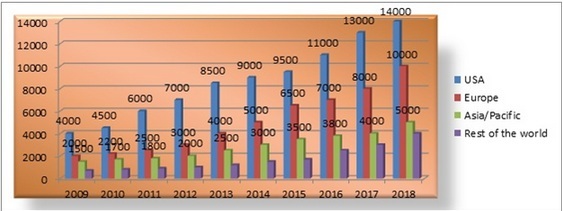
Figure 1: Market by Geography
Why to attend???
Stem Cell Research-2016 could be an outstanding event that brings along a novel and International mixture of researchers, doctors, leading universities and stem cell analysis establishments creating the conference an ideal platform to share knowledge, adoptive collaborations across trade and world, and assess rising technologies across the world. World-renowned speakers, the most recent techniques, tactics, and the newest updates in cell science fields are assurances of this conference.
A Unique Opportunity for Advertisers and Sponsors at this International event:
http://stemcell.omicsgroup.com/sponsors.php
UAS Major Universities which deals with Stem Cell Research
· University of Washington/Hutchinson Cancer Center
· Oregon Stem Cell Center
· University of California Davis
· University of California San Francisco
· University of California Berkeley
· Stanford University
· Mayo Clinic
Major Stem Cell Organization Worldwide:
· Norwegian Center for Stem Cell Research
· France I-stem
· Stem Cell & Regenerative Medicine Ctr, Beijing
· Stem Cell Research Centre, Korea
· NSW Stem Cell Network
· Monash University of Stem Cell Labs
· Australian Stem Cell Centre
Target Audience:
Eminent personalities, Directors, CEO, President, Vice-president, Organizations, Associations heads and Professors, Research scientists, Stem Cell laboratory heads, Post-docs, Students other affiliates related to the area of Stem cell research, stem cell line companies can be as Target Audience
Market Analysis of Stem Cell Therapy:
The global market for stem cell products was $3.8 billion in 2011. This market is expected to reach nearly $4.3 billion in 2012 and $6.6 billion by 2016, increasing at a compound annual growth rate (CAGR) of 11.7% from 2011 to 2016.
Americas is the largest region of global stem cell market, with a market share of about $2.0 billion in 2013. The region is projected to increase to nearly $3.9 billion by 2018, with a CAGR of 13.9% for the period of 2013 to 2018
Europe is the second largest segment of the global stem cell market and is expected to grow at a CAGR of 13.4% reaching about $2.4 billion by 2018 from nearly $1.4 billion in 2013.
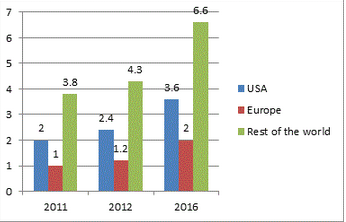
Figure 2: Global Market
Companies working for Stem Cells:
|
Company |
Location |
Business Type |
|
Cynata Therapeutics |
Armadale, Australia |
Stem Cell Manufacturing Technology |
|
Mesoblast |
Melbourne, Australia |
Regenerative Medicine |
|
Activartis |
Vienna, Austria |
Dendritic Cell-Based Cancer Immunotherapy |
|
Aposcience |
Vienna, Austria |
Treatments composed of mixture of cytokines, growth factors and other active components |
|
Cardio3 Biosciences |
Mont-Saint-Guibert, Belgium |
Stem Cell Differentiation |
|
Orthocyte (BioTime) |
Alameda, CA |
Cellular Therapies |
|
Capricor |
Beverly Hills, CA |
Stem Cell Heart Treatments |
|
Life Stem Genetics |
Beverly Hills, CA |
Autologous stem cell therapy |
|
International Stem Cell |
Carlsbad, CA |
Proprietary Stem Cell Induction |
|
Targazyme |
Carlsbad, CA |
Cell Therapy |
|
DaVinci Biosciences |
Costa Mesa, CA |
Cellular Therapies |
|
Invitrx Therapeutics |
Irvine, CA |
Autologous Stem Cell Therapy, Therapeutic & Cosmetic |
General Trends within the Stem Cell Sector
Stem Cell Software’s :
- Cryus : Cryus is developed specially for Cord Blood Banks, Donor Centers, Stem Cells Collection Centers, Biotech Laboratories and Tissue Banks.
- Label-InnThe: Which allows to record the donor or the patient personal data into the database and generates the Donation Identification Number (DIN) according to ICCBBA international standard ISBT128. It serves as labelling software for blood samples and Stem Cells products.
Products Manufactured By Industry Related to Stem Cell:
RoboSep™-16 is the latest RoboSep™ instrument ingenuous for performing fully-automated cell separation from a huge number of samples. Using EasySep™, the column-free immunomagnetic cell separation system, RoboSep™-16 isolates desired cells from a wide range of samples from different species, tissue sources or sizes using positive or negative selection. Through an intuitive user interface, the RoboSep™-16 simultaneously isolates cells from up to sixteen samples with minimal hands on time. By automating all reagent and sample handling steps, and through the use of disposable pipette tips, the RoboSep™-16 rapidly isolates all desired cells while minimizing the risk of sample cross-contamination. After completion of the cell isolation procedure, cells of interest are immediately available for any downstream application.
The EasySep™ Mouse CD25 Regulatory T Cell Positive Selection Kit is designed to isolate highly purified CD25+ cells from single cell suspensions of splenocytes or other tissues by positive selection. Desired cells are labeled with antibodies and magnetic particles. The cells are separated without columns using an EasySep™ magnet. Unwanted cells are simply poured off, while desired cells remain in the tube. Isolated cells are immediately ready for downstream applications such as flow cytometry, cell culture, or suppression assays.
Featured Research:
Gene therapy gives assurance for severe combined immunodeficiency, Researchers have initiated that gene therapy using a improved delivery system, or vector, can restore the immune systems of children with X-linked severe combined immunodeficiency (SCID-X1), a rare, life-threatening inherited condition that primarily affects boys. Previous efforts to treat SCID-X1 with gene therapy were initially efficacious, but approximately one-quarter of the children developed leukemia two to five years after treatment. Results from a study partially funded by the National Institute of Allergy and Infectious Diseases (NIAID), a component of the National Institutes of Health (NIH), suggest that the new vector is equally effective at restoring immunity and may be safer than previous approaches.
OMICS International Conferences invites all the participants from all over the world to attend ' 6th World Congress on Cell & Stem Cell Research’ during February 29-March 02, 2016 in Philadelphia, USA which includes prompt keynote presentations, Oral talks, Poster presentations and Exhibitions.
Stem cells are cells originate in all multi-cellular organisms. They were isolated in mice in 1981 and in humans in 1998. In humans there are several types of stem cells, each with variable levels of potency. Stem cell treatments are a type of cell therapy that introduces new cells into adult bodies for possible treatment of cancer, diabetes, neurological disorders and other medical conditions. Stem cells have been used to repair tissue damaged by disease or age.
Objective
Stem Cell Research-2016 has the goal to fulfill the prevailing gaps in the transformation of this science of hope, to serve promptly with solutions to all in the need. Stem Cell Research 2016 will have an anticipated participation of 300+ delegates across the world to discuss the conference goal.
Success Story: Cell Science Conference Series
The success of the 5th Cell Science conference series has given us the prospect to bring the gathering one more time for our 6th World Congress on Cell and Stem Cell Research meet in Philadelphia, USA. Since its commencement in 2011 Cell Science series has witnessed around 650 researchers of great potentials and outstanding research presentations from around the world. Awareness of stem cells and its application is becoming popular among the general population. Parallel offers of hope add woes to the researchers of cell science due to the potential limitations experienced in the real-time.
About Organizers
OMICS International is one of the leading Open Access publishers and organizers of international scientific conferences and events every year across USA, Europe & Asia OMICS Group has so far organized 300+ International Conferences across the World with 500+ peer-reviewed open access journals in basic science, health, and technology. OMICS International is also in association with more than 1000 International scientific and technological societies and associations and a team of 30,000 eminent scholars, reputed scientists as editorial board members.
Scientific Sessions
Stem Cell Research-2016 will encompass recent researches and findings in stem cell technologies, stem cell therapies and transplantations, current understanding of cell plasticity in cancer and other advancements in stem cell research and cell science. Stem Cell Research-2016 will be a great platform for research scientists and young researchers to share their current findings in this field of applied science. The major scientific sessions in Stem Cell Research-2016 will focus on the latest and exciting innovations in prominent areas of cell science and stem cell research.
Target Audience:
Eminent personalities, Directors, CEO, President, Vice-president, Organizations, Associations heads and Professors, Research scientists, Stem Cell laboratory heads, Post-docs, Students other affiliates related to the area of Stem cell research, stem cell line companies can be as Target Audience.
Conference Highlights
- Cell Differentiation
- Cell Metabolism
- Tissue Engineering
- Stem Cell Therapy
- Gene Therapy
- Stem Cell Technologies
- Stem Cell Treatment
- Cell Biology of Aging
- Stem Cell Apoptosis and Signal Transduction
- Stem Cell Biomarkers
- Reprogramming Stem Cells: Computational Biology
- Tumour Cell Science
- Epigenetics
- Somatic Cell Therapy
- Histology of cell Biology
- Stem Cell Embryology
- Stem Cell Products
- Stem Cell Banking
- Stem Cells
- Stem Cells for Genome
To share your views and research, please click here to register for the Conference.
To Collaborate Scientific Professionals around the World
| Conference Date | February 29-March 02, 2016 | ||
| Sponsors & Exhibitors |
|
||
| Speaker Opportunity Closed | Day 1 | Day 2 | Day 3 |
| Poster Opportunity Closed | Click Here to View | ||
Useful Links
Special Issues
All accepted abstracts will be published in respective Our International Journals.
- Journal of Cell Science & Therapy
- Journal of Stem Cell Research & Therapy
- Cell & Developmental Biology
Abstracts will be provided with Digital Object Identifier by



